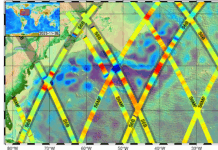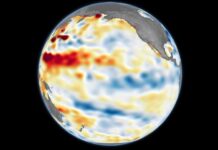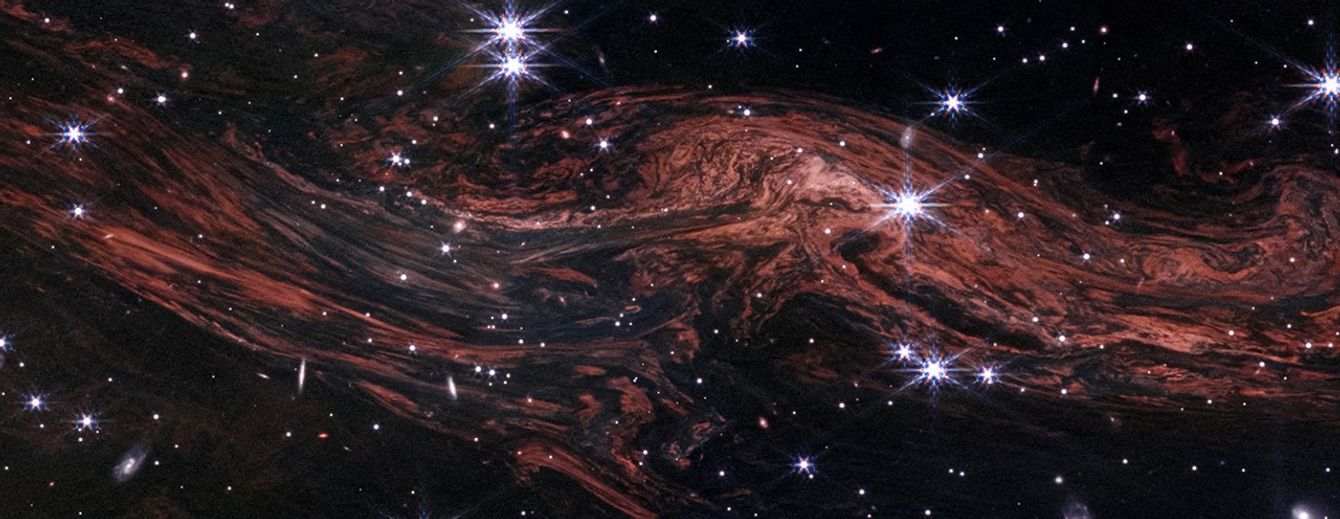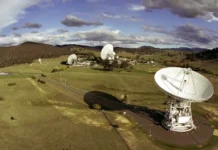A Glimpse into the Universe: The Shimmering Cosmic Curtain
In a recent observation by NASA’s James Webb Space Telescope, an awe-inspiring display of interstellar gas and dust was captured, showcasing the aftermath of a supernova explosion. This phenomenon, often referred to as a “thermal light echo,” presents itself as an expanding curtain of light in the vast cosmos. The spectacle originates from the supernova remnant known as Cassiopeia A, and it offers an extraordinary glimpse into the dynamic processes that occur following a supernova event.
When a star reaches the end of its life, it may explode in a brilliant supernova, releasing an immense amount of energy and light. The remnants of this explosion, including gas and dust, are heated to high temperatures, causing them to emit infrared light. This is what we see as the “thermal light echo.” The term “echo” is used because the light from the supernova travels through space at the speed of light, and as it illuminates the surrounding material, the infrared glow seems to expand outward, much like the ripple effect when a stone is tossed into a pond.
Understanding the Phenomenon: Thermal Light Echoes
To delve deeper into the science behind this phenomenon, it’s essential to grasp some basic astronomical concepts. When a supernova occurs, the energy released is so powerful that it heats nearby gas and dust particles. As these particles absorb energy, they begin to glow, emitting infrared light. This emission is what astronomers term a “thermal light echo.”
The James Webb Space Telescope, with its advanced infrared capabilities, is uniquely equipped to observe such phenomena. By capturing these light echoes, scientists can study the distribution and composition of interstellar material. This, in turn, provides valuable insights into the life cycles of stars and the evolution of galaxies.
Cassiopeia A: A Stellar Graveyard
Cassiopeia A, the source of this particular thermal light echo, is a well-known supernova remnant located in the constellation Cassiopeia. It is one of the strongest radio sources in the sky and has been extensively studied since its discovery. The remnant is approximately 11,000 light-years away from Earth and is believed to have exploded around 300 years ago, although no historical records of the event have been found.
The exploration of Cassiopeia A continues to provide valuable information about the processes that occur after a star’s death. By studying the material ejected during the supernova explosion, scientists can learn about the elements produced in the star’s core before it exploded. These elements, such as iron, calcium, and silicon, are critical to understanding the chemical evolution of the universe.
Implications for Astrophysics
The observation of thermal light echoes has broader implications for the field of astrophysics. By analyzing these echoes, astronomers can estimate the distance to the supernova remnant and study the velocity of the expanding material. This information is crucial for constructing models of supernova explosions and understanding the mechanisms that drive them.
Additionally, thermal light echoes can help astronomers identify previously unknown supernova remnants. Since the echoes can be observed long after the initial explosion, they provide a valuable tool for discovering remnants that may not be visible through other means.
The Role of the James Webb Space Telescope
The James Webb Space Telescope, a joint project of NASA, the European Space Agency (ESA), and the Canadian Space Agency (CSA), is designed to observe the universe in infrared light. Its mission is to explore the formation of stars and galaxies, study the atmospheres of exoplanets, and investigate cosmic phenomena like supernova remnants.
With its powerful instruments, the James Webb Space Telescope can peer through cosmic dust clouds that often obscure astronomical observations. This capability allows it to capture stunning images of thermal light echoes and other celestial events, providing scientists with unparalleled data to advance our understanding of the universe.
Why This Matters
Understanding supernova remnants and phenomena like thermal light echoes is not just an academic exercise; it has practical implications for our knowledge of the cosmos. Supernovae are responsible for seeding the universe with heavy elements, which are essential for the formation of planets and life as we know it. By studying the remnants of these explosions, we gain insight into the processes that shape the universe and the building blocks of life itself.
Looking Ahead
As technology advances and telescopes like the James Webb continue to explore the universe, we can expect to uncover even more about the mysteries of supernovae and the cosmos at large. Each new discovery adds a piece to the puzzle of the universe’s history, helping us to understand our place within it.
For those interested in following these developments, the James Webb Space Telescope’s findings are regularly published in scientific journals and shared by NASA and its partners. These discoveries not only enhance our knowledge of the universe but also inspire future generations of astronomers and scientists.
To explore more about the James Webb Space Telescope and its discoveries, you can visit the official NASA website for updates and detailed information on ongoing research.
For more Information, Refer to this article.


































